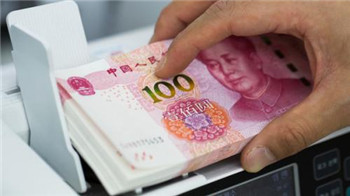
China’s onshore and offshore exchange rates have converged to parity, less than one week after the gap between them hit an all-time high as investors bet on currency depreciation in the offshore market.
此前,投资者押注离岸市场人民币兑美元汇率下跌,导致人民币在岸和离岸汇率的差距达到历史最高位。不到一周之后的今天,这两种汇率曾一度变得一致。
The two rates converged – the first time since October 29 – just minutes after the renminbi-based overnight Hong Kong interbank offer rate, or CNH-Hibor, sky-rocketed to 66.8 per cent. On Monday the rate had risen 939 basis points to a then-record high 13.4 per cent.
两种人民币汇率自2009年10月以来第一次相等,几分钟之前,隔夜香港香港银行同业拆息(Hibor)曾飙升至66.8%。周一,Hibor曾上涨939个基点,当时达到了13.4%的创纪录高点。
The soaring rate reinforces just how tight liquidity is for the offshore renminbi, after China opened a new front in its war to curb currency depreciation by buying up renminbi offshore, foiling the burgeoning carry trade and driving the cost of borrowing to a record high. The spike likely reflects a massive short-squeeze.
Hibor飙升凸显出,在中国在抑制人民币贬值的战争中开辟新战线——买入离岸人民币,挫败迅猛发展的套息交易(carry trade),并把借款成本推升至创纪录高位——之后,离岸人民币市场的流动性是多么的紧绷。
Earlier today the People’s Bank of China left the daily fix for the onshore rate steady – a third day of basically leaving it untouched.
今早,中国央行(PBoC)维持在岸人民币汇率中间价稳定,这是连续第三天基本未动中间价。
Barclays analysts noted the trio of stable fixes could reflect the central bank’s efforts to soothe markets: “A desire to calm the strengthening global reaction may also have played a part, as it did in August 2015, given the growing global repercussions of Chinese market volatility.”
巴克莱(Barclays)分析师指出,维持中间价稳定可能反映出中国央行在努力安抚市场:“鉴于中国市场波动对全球的影响越来越大,就像在2015年8月那次一样,中国央行平息日益加大的全球反响的愿望或许也起到了作用。”












